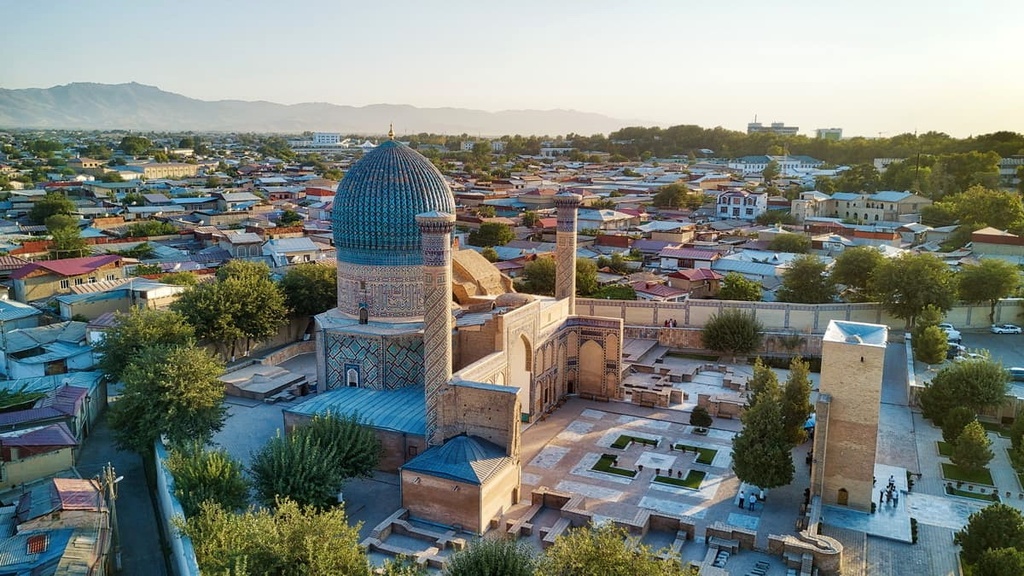Get PeakVisor App
Sign In
Search by GPS coordinates
- Latitude
- ° ' ''
- Longitude
- ° ' ''
- Units of Length

Yes
Cancel
Share ×

Scan the QR code and open PeakVisor on your phone
❤ Wishlist ×
Choose
Delete
My heart’s in the Fans,
Now heartless I wander.
In gentlest chitchats
And at loudest feasts,
I silently dream of those blue peaks
Russian poet Yury Vizbor (1976)
The Fann aka Fanskiye Mountains as many experienced travellers have long called them are one of the most beautiful areas of the Pamir-Alai. They are located mainly on the territory of Tajikistan. From the north, there lies the Zeravshan Range and from the south stretches the mighty Hissor Range. The Fann are actually considered to be the connector and the highest point of both those ranges. The eastern border of the Fann is the Fandarya River, whereas the River Archimaidan forms their western border.
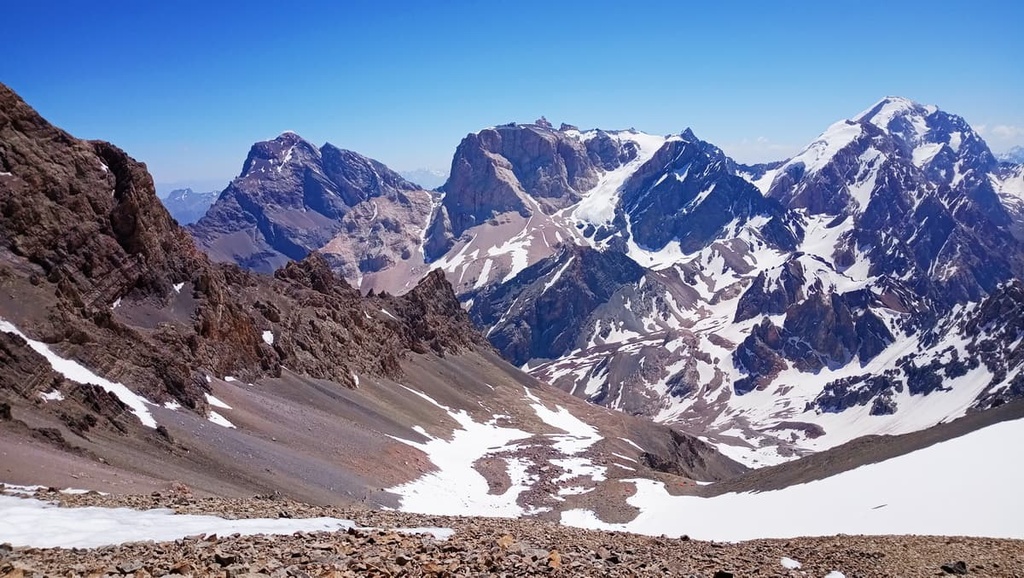
The name Fann roughly translates as "Fortress" and "Giving Gold", the name stuck because of rich gold mines. Yet, it is not the gold that attracts thousands of tourists to the Fann. Here are scattered incredibly beautiful lakes, about 40 in total, fringed by the highest, sharp, rugged rocky summits, which do not shed their snow crowns even in summer. Here almost lunar landscapes are enlivened with intricately shaped juniper trunks twisted by winds and sun power into incredible figures. Here, the beautiful Energiya and Chimtarga Peaks rise above the Mutniye (Muddy) lakes, which bespeak the name, they are really muddy. Another significant advantage is the convenient transport accessibility of the Fann Mountains and visa-free entry to Tajikistan for Russian citizens.
In total, there are 97 mountains in the Fann mountains. The highest point of the Fann is Chimtarga Peak (5,489 m). Other five-thousanders are Bodhona (5,138 m), Chapdara (5,050 m), Big Hansa (5,306 m), Small Hansa (5,031 m), Zamok aka Castle (5,070 m), Mirali (5,132 m), Energy (5,120 m).
Interestingly, there are eight five-thousanders in the Fann Mountains. Exactly the same number as in the Caucasus. And the highest point of the range is only 150 meters lower than Elbrus!
The major routes usually feature the picturesque lakes, i.e. the Alaudinskie lakes in the valley of the river Chapdara, as well as the Kulikalonskie, Big Allo, and Iskanderkul lakes. The oldest and most famous itineraries are those No. 429 (Samarkand - Lake Gushor - Lake Iskanderkul - Dushanbe) and its return trip No.435.
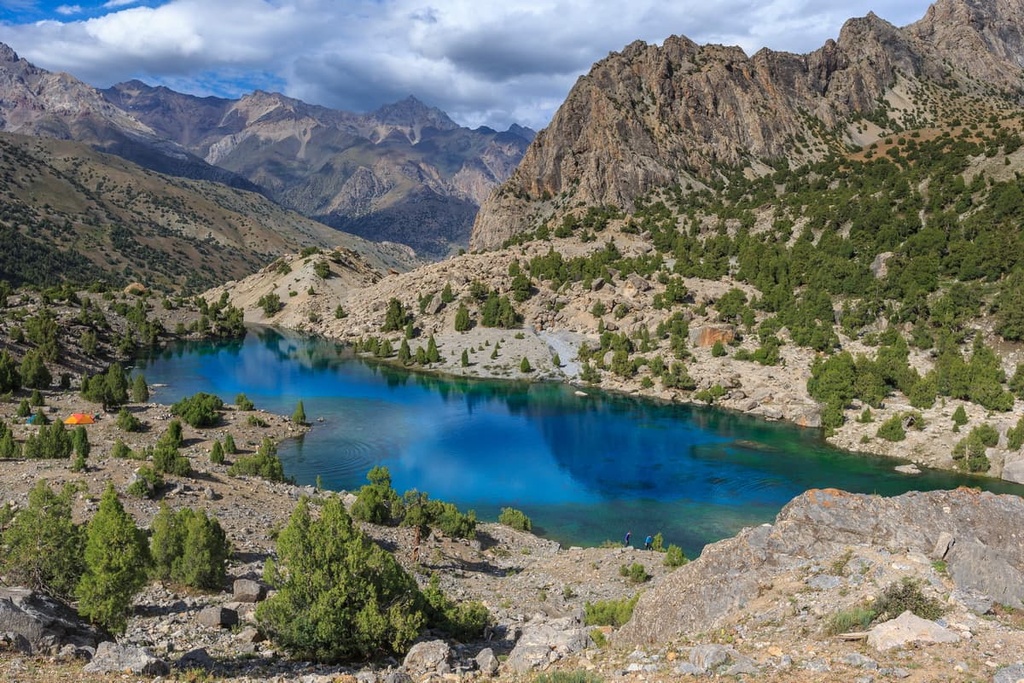
A 2-week route off the beaten track is Artuch Tourist Camp - Lake Chukurak - the Chukurak Pass (3,150, 1A) - the Kulikalon lakes - the Alaudinsky Pass (3,770, 1A) - the Alaudinsky lakes - the Muddy lakes - the Chimtarga Pass (4,760, 1B) - Lake Big Allo - the Zindon River - the Archimaydan River. The Alaudinsky Pass, which is quite high (3,770 m), offers views of the five thousanders of this area: Chapdara, Bodkhona, Zamok (Castle) Peaks. But the highest peak of the Fann Mountains - Chimtarga - is always hiding from travelers.
The second half of the classic route (Chimtarga Pass (4,760) and the descent along the Zindon River valley) is much more difficult than the first one because of the higher altitude and in some places the classic mountain trail features loose stone and steep slopes. This section is a classic for mountain tourism of initial categories. If you want to relax and trek in the classical sense of the word (all the time on the trail without real objective risks), consider getting the crème de la crème by going to the chain of lakes: Chukurak - Kulikalon - Alaudin. You can do that in 2-3 days and then, even with a visit to Samarkand and Bukhara, everything can be done on a week's vacation.
Conversely, if a week (usually allocated for a classic route) is not enough and you want more, the most logical options are to go farther towards the Marguzor Lakes (the route is simple through either uncategorized or 1A passes) or go to Lake Iskanderkul (passes from 1B and above, you need basic climbing equipment). Such routes will take 10-14 days. The length of 80 - 90 km.
The thing of the Fann Mountains is surely the lakes. The most beautiful of them are the Kulikalon lakes, Alaudinsky lakes, and Big Allo Lake. The chain of the Marguzor lakes and Iskanderkul Lake are also beautiful, but there are well-trodden roads to them which somewhat limits your freedom and you will not swim there stark naked. But yes, they are beautiful and good as a starting point or finish.
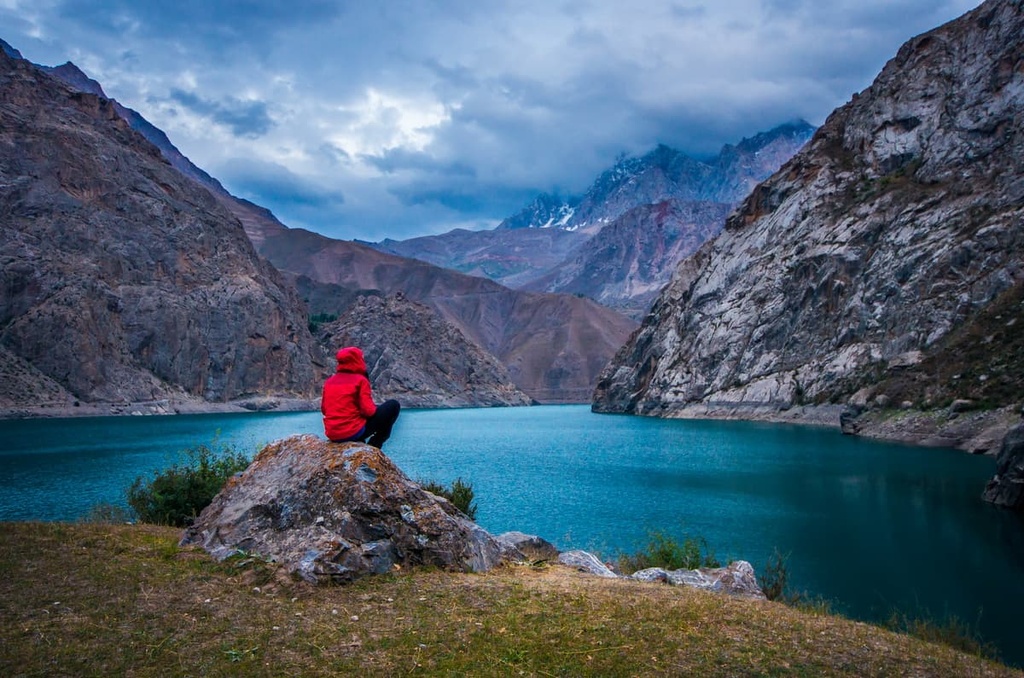
The most logical and, in fact, the only possible route through the three most beautiful lakes is the classic one in the area, which implies its high popularity and hordes of tourist groups. It takes 6-7-8 days to cover it depending on the greed of travel agencies; the length of about 50 km.
The Mutniye (Muddy) Lakes are strewn in a chain at the height of 3,511 meters. They are located east from Chimtarga mountain. You cannot swim in the lakes due to the high content of silt. However, many tourists like looking at these brownish-greyish lakes because of their specific muddy color and harsh surroundings that lack lavish vegetation. From the lakes, you can go to a glacier called Maria. This glacier is mobile and dangerous, so do not come too close.
The Mutniye (Muddy) Lakes are classified as half dead because they do not have a real outflow as such. They are fed by the surrounding glaciers. They freeze in winter. Interestingly, there is a road leading from the lakes to Dushanbe. There is also a village 22 km away from them. Nights are usually not very cold; and in summertime it is even hot.
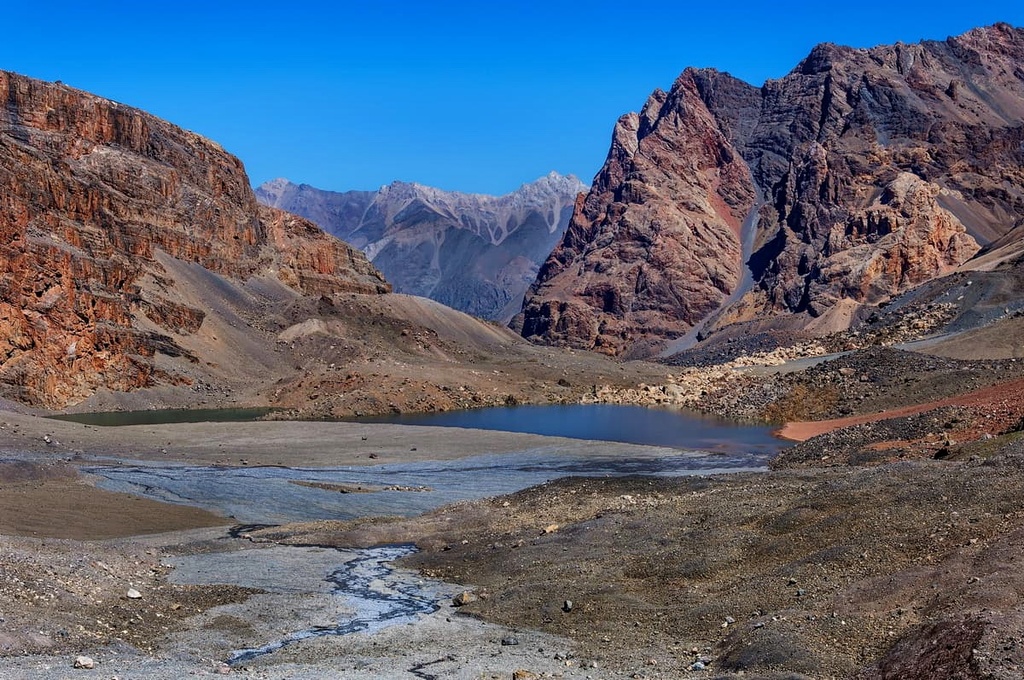
Big Allo Lake appeared due to the devastating earthquake, which occurred in 1912. Almost like the one that formed Sarez Lake in the Muzkol Ridge and North Alichur Ridge of the Eastern Pamir. Destruction of the southern slope of the Fann Mountains led to the river stop, which produced Big Allo Lake. In the Fann Mountains, this lake is considered to be the most beautiful, it is distinguished by its shape resembling a big bean and a rich blue color. It is surrounded by a picturesque forest of relict arch. These trees have unusual trunks. Together with the lake, they form an amazing landscape worthy of every pic you take. Nearby, there are heaps of stones. If you move 2.5 kilometers up, you can get to Upper Allo. This lake is much smaller, but also has a peculiar beauty. Here you can take the famous route through the Chimtarga Pass directly to Big Allo through Upper Allo. The route includes a visit to the Zindon Gorge. Finally, you can reach the Sarymat River though the road to it is quite difficult. You will need to use an off-road vehicle.
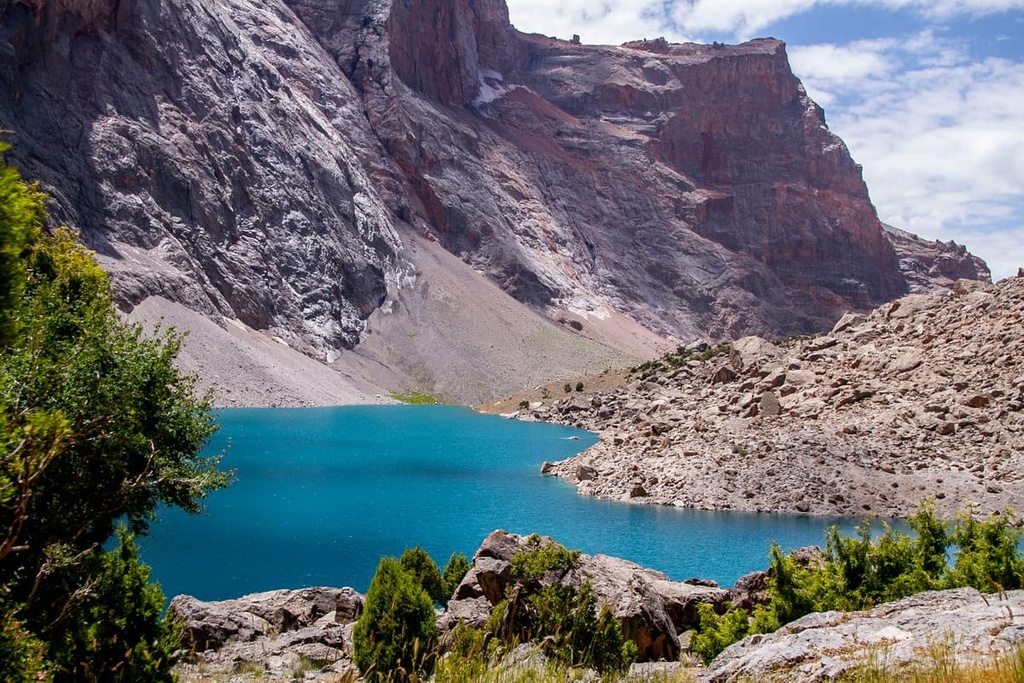
The Marguzor Lakes are located in the western part of the Fann Mountains, and their system has as many as seven reservoirs. The most famous of the seven lakes is Nezhegon Lake. The water body has become popular due to its turquoise colour. The lake formed in a relatively small hollow. With the snow-covered mountain towering at the back of the lake, with the sunlight sparkling on the snow and the surface of the water, your photos will take on postcard quality.
Like other lakes of the Marguzor system, Nezhegon changes its color from blue to purple during the year. You can get to lake Soy from Nezhegon. The trail offers a wonderful view of the Nezhegon, which fully reflects its beauty.
There is a legend connected with the Marguzor lakes, it tells of the time when Allah sent his servants to earth to plant arches and fruit trees. The Marguzor lakes proved to be an insurmountable obstacle for the servants who could not get to the local gorges, so they decided to plant all saplings near the Sarymat River. Thus, the Sarymat River enjoys lavish greenery whereas all other areas are rather barren.
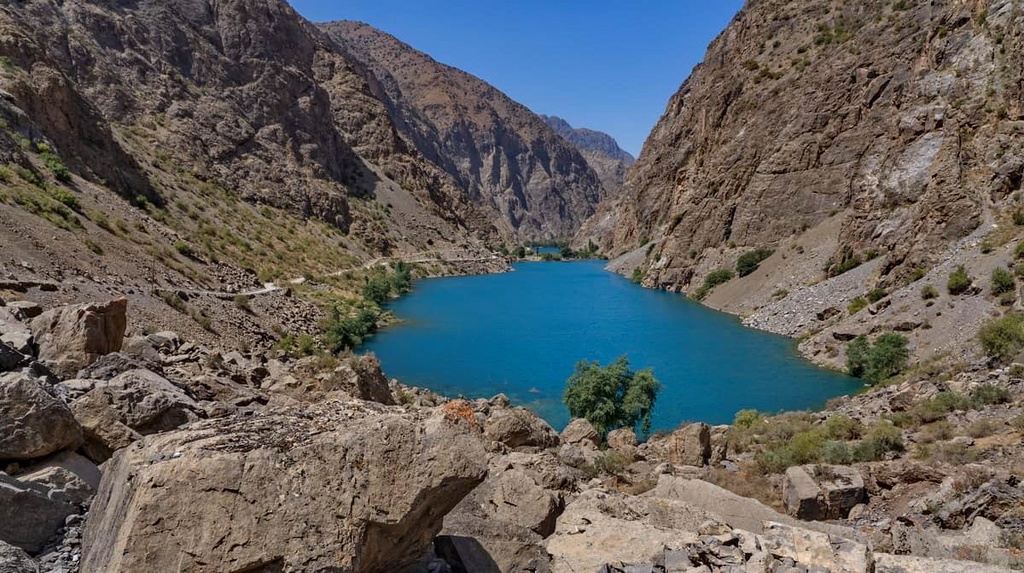
When trekking in the Fann, you realize the intricacies of the Central Asian weather. The longer you walk, the hotter the sun gets, but the higher you climb the cooler the wind. That is why most trekkers chose to have a stopover at 3K m a.s.l. in order to acclimatize to the local climate and get used to this kind of weather games.
When on the classic route, your kilometre diagram stats may seem very surprising as you will see 4.5, 5.5, 7 km covered. But then comes the realization that it looks so due to the serious altitude drops and elevation gains and the need for proper acclimatization before going at an altitude of 4.500 meters under the Chimtarga Pass.
Due to the specifics of the climate (it is very hot during the day) the most optimal schedule would be to start as early as possible, camp by lunch time, swim in the lakes, rest in the afternoon, and have some base camp rides to the nearest milestones in the evening.
There is a high probability to catch an intestinal infection, therefore, use filters, boil your water and don’t be shy to take disinfecting pills.
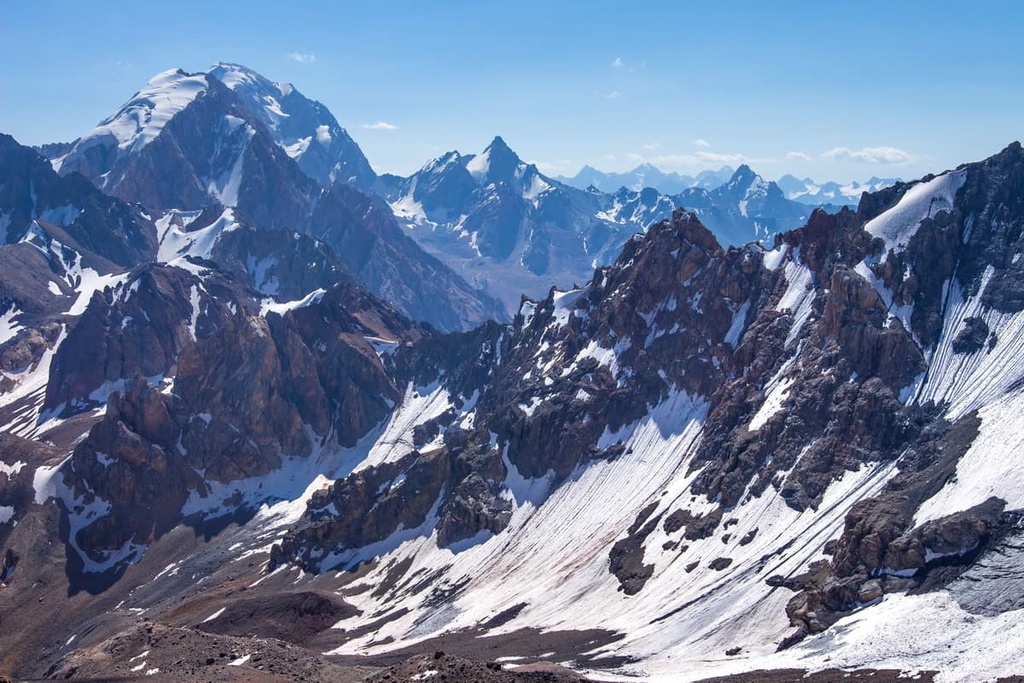
If you are a citizen of the former USSR countries, you won’t even need a foreign passport, travelling with a domestic one for 30 days does not require any visa. Yet, for other countries’ residents, please enquire about a visa at the embassies of Uzbekistan and Tajikistan in your country. Usually, you will get a stamp in the passport upon arriving at the airport of Samarkand and another stamp on the border with Tajikistan. And that was it. Nobody is checking anything or demanding anything in the mountains or at the tourist camps. There are all good old Soviet traditions - don’t ask, don’t tell, don’t bother. You can go wherever you want, put tents wherever you want. In general, everything is very simple, tourist and human-friendly.
The nearest and most convenient airports are Dushanbe airport (in the capital of Tajikistan) and Samarkand airport (in the legendary city in Uzbekistan, located on the Silk Road, the former capital of Tamerlane’s Empire). If you are arriving early in the morning, it will take 10-15 minutes to cross the border.
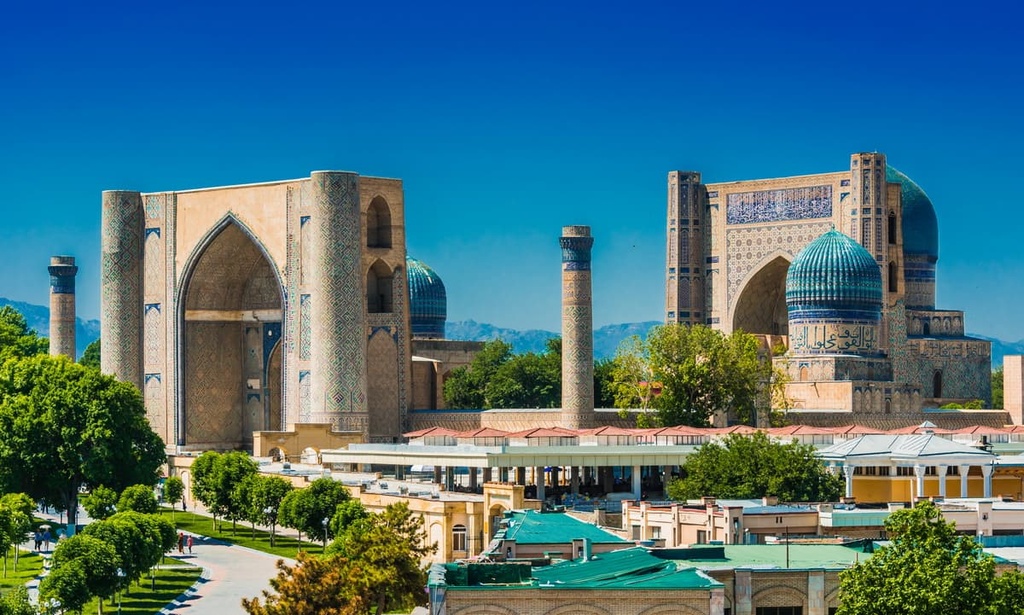
You can also fly through Tashkent, the capital of Uzbekistan. This is 300 km farther to the mountains than Samarkand, but tickets can be much cheaper, the road is good and you can take a train, a car or even a coach.
Based on the transport specifics of the area, there are five points for the beginning and finishing hiking in the Fann Mountains:
Less experienced hikers might be too superficial in choosing the right time and dates for the hike. In fact, the mountains are staggeringly different in different periods of the classical summer season. Depending on your experience and desire (to see more mountain flowers, to get in the best weather, to capture the autumn colors) dates of the hike may vary very dramatically.

Samarkand is a city of blue and green domes, bright facades and luxurious paintings, you can easily get lost in the bright kaleidoscope even more so because all inscriptions and bus announcements are in Uzbek language. This city is a real oriental fairy tale with a rave of colours. Fantastic cuisine, hospitality and original history awaits you in this one of the oldest continuously inhabited cities in Central Asia.
Samarkand aka Samarqand (and in the times of Alexander the Great, it was called Markanda) is located in southeastern Uzbekistan. There is evidence of human activity in the area of the city from the late Paleolithic Era, though there is no direct evidence of when Samarkand was founded. Some theories propose that it was founded between the 8th and 7th centuries BC and started to prosper when the Silk Road came into operation in the 2nd century BC. Samarkand was almost wiped out by Genghis Khan's Mongols, then Tamerlan brought the city back to life and made it the capital of his vast empire. Under Ulugbek, Tamerlan's grandson, many madrassas were built in the city - thus making it the scientific capital of Central Asia. Almost all unique architectural monuments of Tamerlane's times have been preserved to this day.

Getting around the city is an adventure in itself. Bus fare is around €0.10, but all the announcements are in Uzbek. However, there are ‘hookers-in’ who are announcing every stop and the route, which can help you understand whether you’ve taken the right bus. Taxis are €0.20-0.40 per person and the driver would usually take 3 more passengers. It is important to agree on the fare before you get into the taxi, you can be charged 10 times more just because you are a tourist.
Everyone goes to Samarkand for ancient mosques and mausoleums, which will make you feel like a hero of oriental fairy tales. In 2001, UNESCO added the city to its World Heritage List as Samarkand – Crossroads of Cultures.
The main sights are concentrated in the center in the walking distance from each other.
It is worth starting the city tour from Registan Square. It is the heart of the city and one of the most famous attractions of Central Asia. The ensemble of the square includes three madrassahs (spiritual schools) of the 15-17th centuries: Ulugbek Madrassah, Tilla-Kari Madrassah and Sherdor Madrassah. They are considered the oldest in the world and are examples of unprecedented skills of the builders of those times.
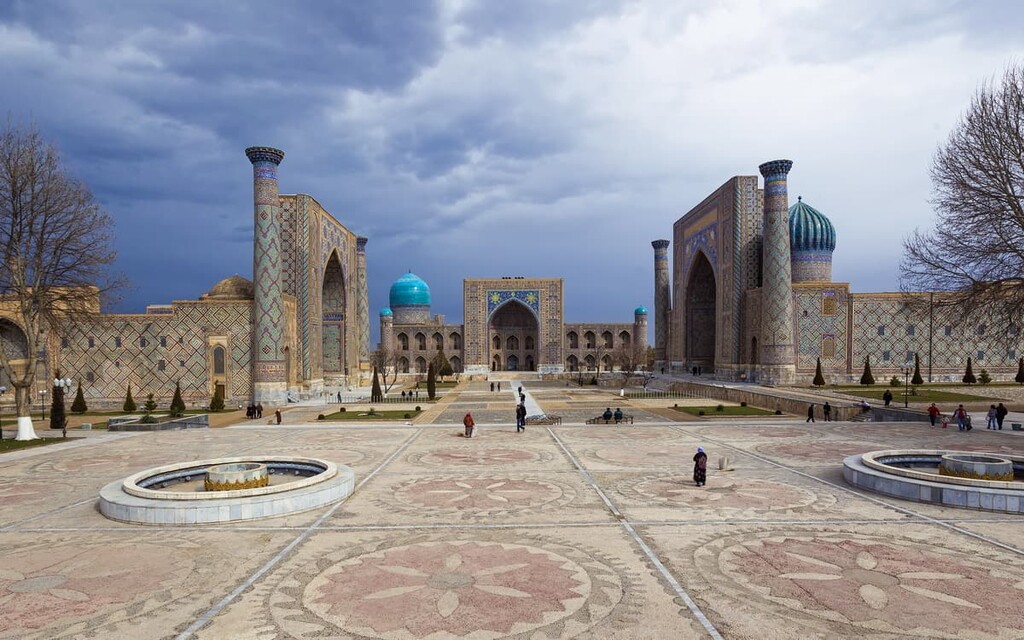
After Registan, go to Medina. Just follow the residential area. Medina is a place where locals live, it is vivacious and boisterous, people are really friendly and can easily invite you for pilaf or a cuppa.
The Siabian Bazaar, which is a 10-minute walk from Registan, is a must-visit. The market exposes the spirit of true Central Asia with its mind-blowing riot of colors, emotions, delicious smells, and loud sounds.
Another destination point is the Samarkand Regional Museum of Local Lore, located in an ancient mansion that used to belong to one of the richest merchants of Samarkand - Abram Kalantarov. The interior is made in European and Central Asian style. The museum itself consists of two departments: History and Nature, there are collected old ceramics, stuffed animals and artifacts from different historical periods of life. A large part of the exhibits are dedicated to European and Bukhara Jews. The museum is open on weekdays from 9.00 to 17.00.
If you are an art lover or like bringing back really culture-specific souvenirs, go to the Chorsu Gallery, located on the site of the oldest market in the city, right behind the Registan. You can find the paintings of the best Samarkand artists (and buy some if you like), national art crafts: clothes (including the famous skull-caps aka tubeteika, the brighter the colour, the better connection you have with cosmos and Allah!), sculptures, ceramics, souvenirs, carpets.
If you are interested in astronomy, visit the Ulugbek Observatory and Museum, located on the outskirts of Samarkand, on Kuhak hill. This is the place where our modern concept of the length of the year was established! Due to the exploration and description of 1018 stars and a catalog of the starry sky Zij-i Sultani made by Sultan Ulugbek in 1437, we now know that our year lasts for 365 days, 6 hours, 10 minutes, 8 seconds.
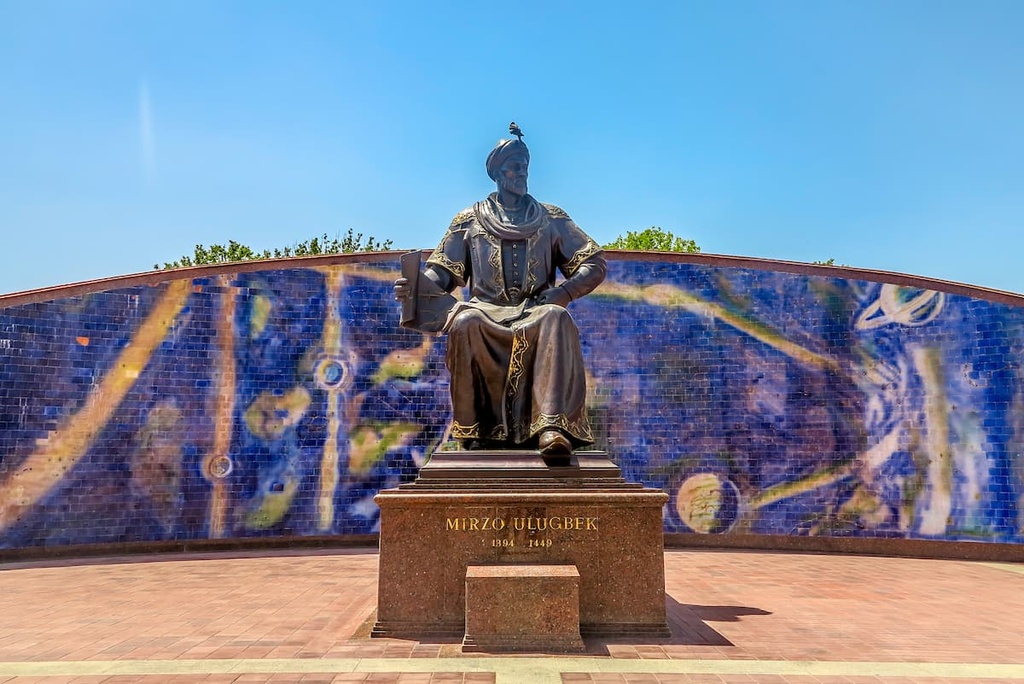
Timur (Tamerlane) was buried here 614 years ago. Gur-e Amir Mausoleum is the last refuge of the great leader. It is possible to visit the inside of Gur-e Amir only in the daytime and tourists can only access decorative tombstones - the real ones are hidden from the prying eyes in the basement crypt. However, the place looks most magnificent and enigmatic at night.
Make sure to visit Bibi-Khanym Mosque (Bibikhonim St.), the largest mosque in Central Asia. According to a legend, it was built by Temur's eldest wife - Sarai-Mulk-Khanum - together with masters from India, Iran, Khorezm and the Golden Horde. They say that if you make a wish and walk around Bibi Khanym crypt located in the mausoleum three times, it will definitely come true. The entrance fee is €2.30.
Khazret-Khyzr Mosque dates back to the 8th century. It stands on a hill, on the outskirts of the ancient settlement of Afrosiab (Shakhizinda and Tashkent streets) and is considered the most beautiful in Samarkand. Here in 2018 opened the mausoleum of the first president of Uzbekistan Islam Karimov. Climb the minaret and you will see stunning views of Bibi-Khanym and Shah-i-Zindu.
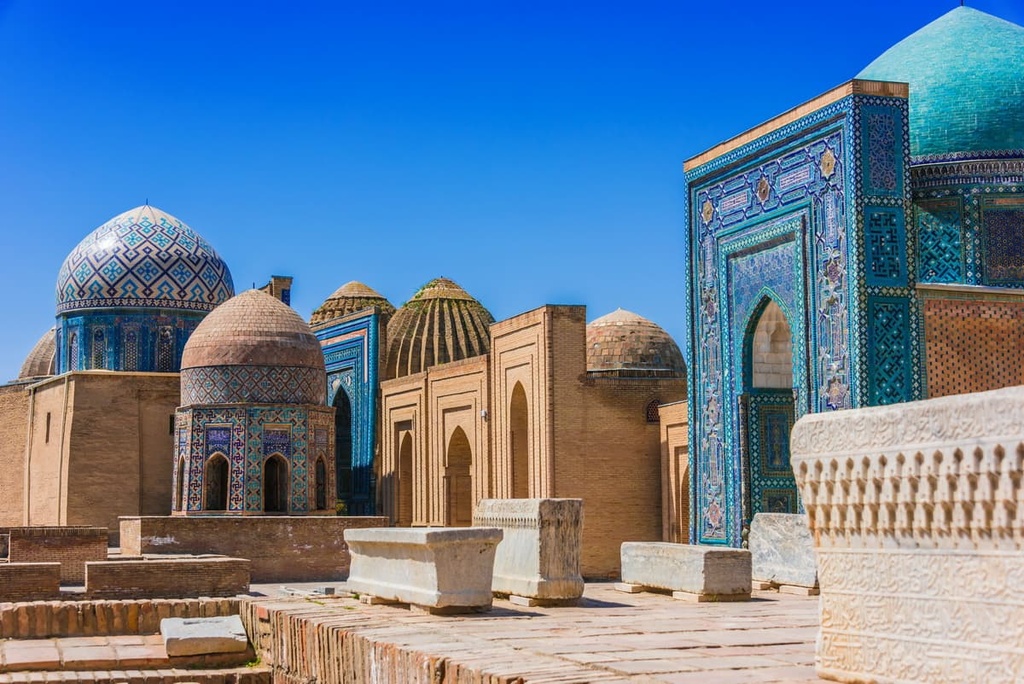
The Shahi Zinda Mausoleum complex is located near Bibi-Khanym Mosque. The complex consists of 11 mausoleums dated by the 14-15th centuries. It was the burial place for the royalty. This ensemble is very important for religious pilgrims. In ancient times, the hajj to Mecca could be replaced by a visit to the Shahi Zinda, where according to a legend the remains of the great preacher - Kussam ibn Abassu, a cousin of the Prophet Mohammed, are buried. The entrance fee to the mausoleum complex is €1.30.
The Mausoleum of Hodga Donier (Prophet Daniel) is a pilgrimage site for believers of three religions: the tMuslims, the Christians and the Jews. This is because Tamerlan brought and buried here part of the ashes of the Old Testament Biblical prophet Daniyar.
Cuisine in Samarkand is truly authentic as you will not see the usual McDonald's, Burger King and KFC. Instead, there are hundreds of vendors with shawarma/falafel/doner kebab on each corner. If you seek some bar or night entertainment, Samarkand is not a place to go, everything closes at 11 pm. But there are some very few exceptions, i.e. Bar BQ, Blues Bar, Babai Lounge Bar, Coffee El-Merosi and some others.
If you are looking for a restaurant, the choice is much wider:

Street food to taste:
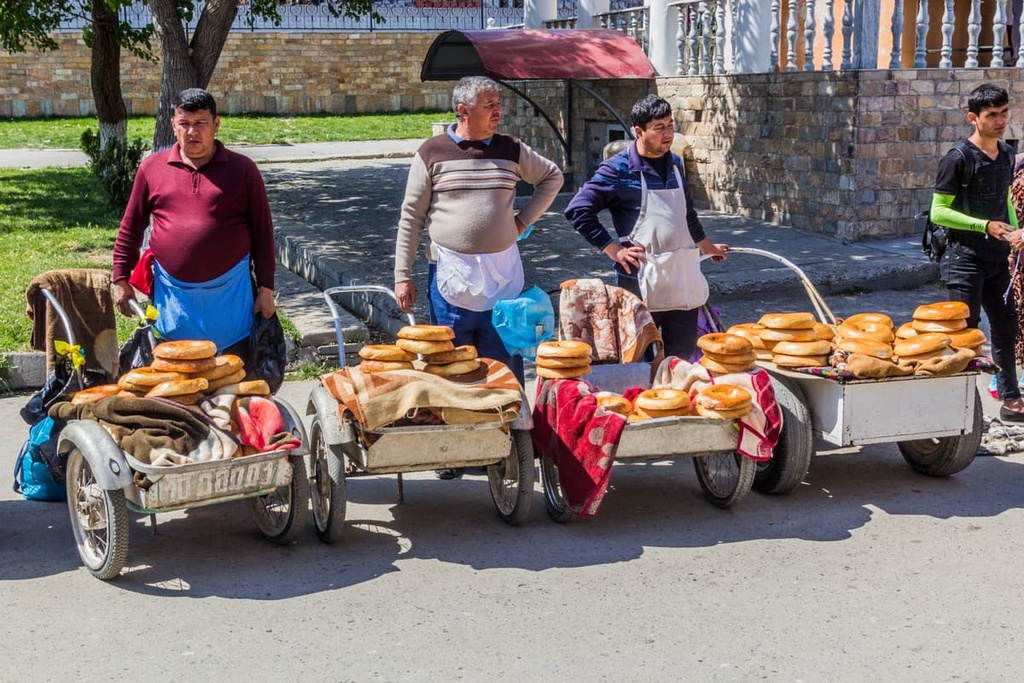
Mind you, Airbnb options are virtually non-existent, but there is plenty of choice on booking.com, especially for hostels which return you money in case you cannot come.
Hostels:
Hotels:
Don’t be taken in by the words lux / luxury / palace in the name of a hotel, it is typical for Asia to name big. The prices despite the big name are quite affordable.
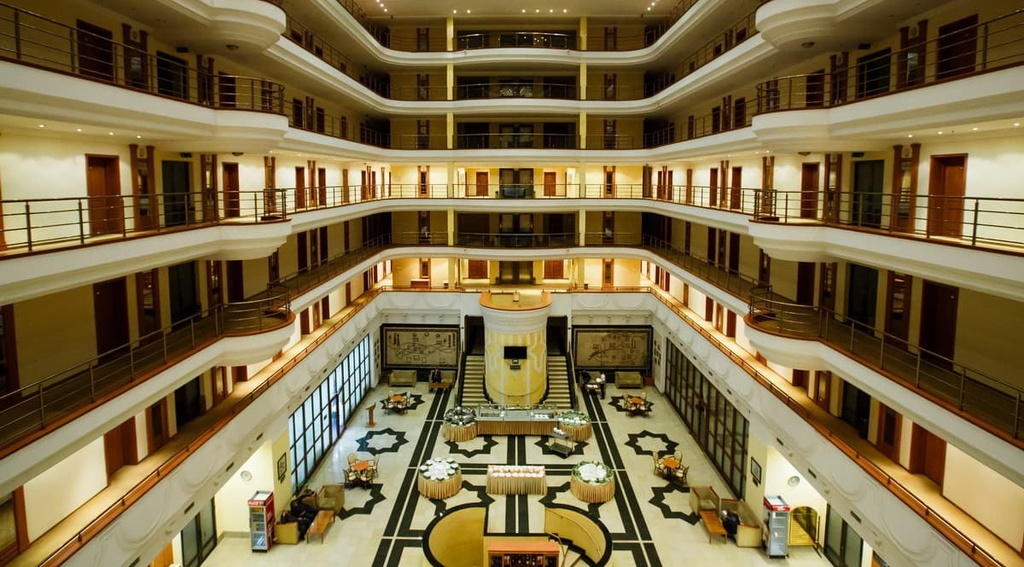
Luckily, the black foreign exchange market is non-existent and you can change money in any bank (on weekdays only!). The local currency is sum, but make sure you don’t change too much because it will be problematic to change it back to dollars. It is best to travel with dollars. Rubles or euros will be unprofitable to change here, and ATMs are not present everywhere yet.
Tickets to the sights for tourists cost about 10 times more than tickets for Uzbekistan citizens. The same may apply to souvenirs in shops. However, there are a lot of Russians living in the country, so you can try to say that you are from Tashkent, and have left your passport in the hotel. Of course, you may be asked at what address you live, what 5 districts of Tashkent and subway stations or large bazaars are. It all depends on your luck.
It will be very difficult to buy SIM in Uzbekistan, so try to negotiate with local people to buy it for you. The cost is €4-5, it will include 1.5 GB and 600 minutes per month.
You will not see price tags almost anywhere (only if it is not a restaurant). Therefore, the main rule for Samarkand and Uzbekistan in general is to haggle. Good haggling skills will help you reduce the price at least 2 or more times.
To reduce travelling costs, you can use iTaxi and Taxi Ok apps.
Spring and autumn are high seasons in Samarkand since summer is too hot.
Tell us about your adventures in the Fann Mountains and Samarkand at peakvisor@routes.tips
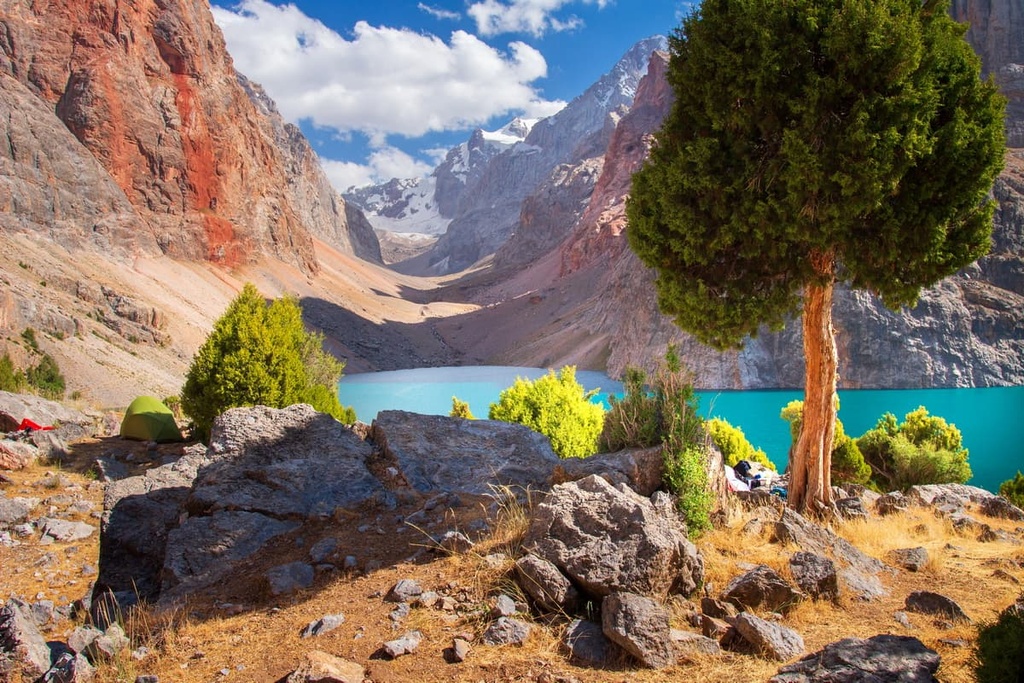
Explore Fann Mountains with the PeakVisor 3D Map and identify its summits.


